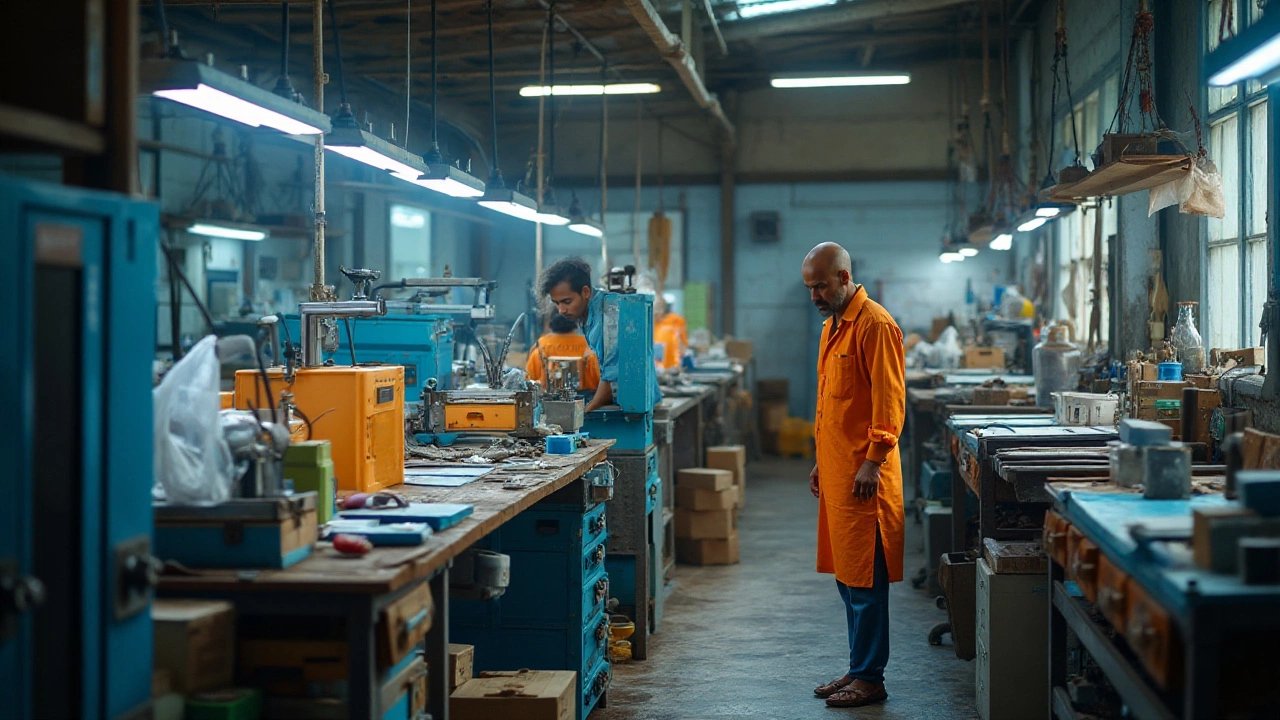Small-Scale Manufacturing
When we talk about small-scale manufacturing, production activities that operate on a limited geographic area or with modest capital investment, often serving local markets. Also known as micro‑manufacturing, it fuels community growth, creates niche products, and bridges the gap between large factories and home‑based crafts. Small‑scale manufacturing bridges the gap between big‑box factories and local artisans, feeding both jobs and innovation.
How it Shapes the Local Economy
One of the biggest ripples comes from the local economy, the network of businesses, services, and consumers within a town or region that depend on each other's success. Small‑scale manufacturing drives local economy growth by keeping money circulating within the community, boosting tax revenue, and spurring related services like logistics and retail. In many Indian villages, a handful of workshops can generate up to 30% of household income, turning idle labor into productive output. The sector also reduces migration to cities because people find viable work close to home, which in turn preserves cultural skills and lowers urban pressure.
Another core pillar is the creation of industrial jobs, employment opportunities ranging from skilled machine operators to entry‑level assemblers in small production units. These roles often require less formal education than corporate factories, yet they offer steady wages and on‑the‑job training. For example, a process operator in a compact plastic molding unit can earn between INR 20,000‑30,000 per month, while a senior technician may reach INR 45,000. The sector also encourages entrepreneurship: many workers eventually open their own micro‑shops after mastering a trade, reinforcing the cycle of job creation.
The rise of the plastic industry, companies that produce, recycle, or repurpose polymer materials, especially in the form of resins and finished goods, shows how small‑scale manufacturers adapt to market demand. In 2025, recycled PET, rHDPE, and bio‑based plastics dominate the niche, with local producers securing contracts for packaging, automotive parts, and solar panel frames. Because these units operate close to raw material sources, they cut transport costs and lower carbon footprints, linking industrial activity with sustainable practices. This shift also opens new revenue streams for farmers who sell agricultural waste as feedstock for bioplastics, tying manufacturing back to the land.
All these threads—local economic boost, job creation, and a greener plastic supply—come together in the articles you’ll find below. Whether you’re curious about water‑wise gardening tips that complement micro‑production, looking for the highest‑paying factory roles, or wondering how steel quality varies across countries, the collection offers real‑world data, practical advice, and clear examples. Dive in to see how small‑scale manufacturing shapes India’s future, one workshop at a time.
Top Small-Scale Manufacturing Industries to Watch in 2024
The year 2024 is set to witness significant growth in small-scale manufacturing industries due to technological advancements and changing consumer preferences. From sustainable packaging solutions to customized 3D printing services, SMEs are poised to take advantage of these trends. This article explores the key industries expected to flourish, provides insights into market opportunities, and offers practical tips for entrepreneurs looking to capitalize on these booming sectors. Understanding these emerging trends could help businesses align their strategies to meet consumer demands effectively.
- manufacturing
- India
- food processing
- garden tips
- rice cultivation
- government schemes
- balcony garden
- urban gardening
- balcony gardening
- profitable business
- business ideas
- plastic manufacturing
- drip irrigation
- plant care
- steel manufacturing
- sustainable gardening
- startup ideas
- steel industry
- flower gardening
- textile manufacturers






